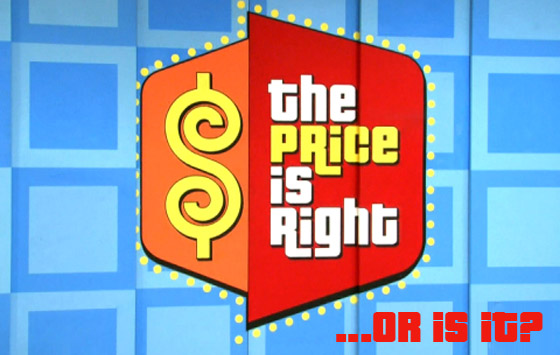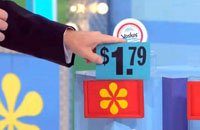
Of all the strategies you’re thinking of for your new business, pricing is the one that can truly make or break your business. Price too high and your competition will get all the business. Price too low and you won’t make enough money. Super-smart business economists have come up with dozens of pricing models – any of which can be used to help bump up your profit while keeping the customers happy.
Figure out your costs
You should have a very clear idea of how much your product actually costs. You’ll need to figure out the cost of goods which includes the amount paid for the product plus shipping expenses. You’ll also need to factor in operating expenses, which include everything from office supplies to marketing to labor. Obviously, your product should be priced high enough to cover all these things, plus include some profit.
When setting your prices, consider a few different pricing models:
1. Psychological Pricing

Studies have shown that consumers tend to round down instead of up when looking at prices. For instance, pricing an item at $9.97 instead of $10.00 encourages the customer to think of the item as $9.00 instead of $10.00.
2. Multiple Pricing

“Buy One Get One Half,” or Three for $1 are both examples of multiple pricing. Consumers purchase more than they originally intended with this pricing strategy. Think about the last time you saw a “Buy One Get One Half” sale at the shoe store. It’s pretty hard to pass up saving 50% on a second pair of shoes, even when you walked in the door intending to only buy one pair.
3. Loss Leader Pricing

Most common at the grocery store, loss leader pricing highlights one or two products that are priced so low that the store actually loses money on them. But they bring people in who will buy other things. So, if the canned soup is on sale for 25 cents a can, the store loses money. But it makes money on the full-priced items such as milk, crackers, bread and the box of donuts that the consumer buys when he comes in.
Even if you have a different kind of business, you can use loss leader pricing. For instance, a clothing store might offer graphic t-shirts at a loss, but sell jeans, shoes and accessories to people who come in for the advertised deal.
4. Premium Pricing

At the other end of the spectrum from the bargain pricing techniques is Premium Pricing. With this strategy, you price your goods at an inflated rate and tout your premium quality. You can sell fewer items in order to reach your profit goals, but you’d better be sure that your stuff is worth the extra money, though.
What do you offer that the competition doesn’t? Is your product better quality? Do you have better follow-up service? Apple is one of the most famous companies with this pricing strategy. Its laptops sell for several hundred dollars more than its competitors, but it offers stylish design and in-store customer support.
5. Freemium Pricing

The “Freemium” strategy combines the words “Free” and “Premium” because you’ll be offering both. You’ll give something away for free, then charge a premium price for a related product or service. For instance, HULU offers free viewing for many television shows and movies. But customers pay a monthly subscription fee for premium shows and movies.
Be careful of this kind of pricing. Sometimes consumers may see it as a bait and switch. Help your customers understand clearly what they are getting for free and what they must pay for . . . and why it’s worth it to upgrade!
6. Penetration Pricing

With this strategy, you enter the market with super-low pricing. The intent is to garner as many customers as you can and get them to move from your competition to your business. This works when you have a product with a lot of demand. But it can backfire, too.
It’s a common practice in my town for the Internet service providers to offer a super-low rate for the first year. But at the end of that contract, the rate doubles. The companies are counting on the fact that I don’t have the time or energy to find a new provider. But it makes me angry enough to see my bill double that I take the time to find someone else.
7. High-Low Pricing

This pricing strategy involves pricing your product higher than your competitor, but then offering discounts or coupons on some of your inventory with the idea that customers will still buy the higher priced items when they arrive at the store. It’s similar to loss leader pricing, except that your main product line will be priced higher than normal.
This can backfire in several ways. First, you’ll have to make sure that you’re clearing a profit on the low-priced items because people will be less likely to make compulsive purchases on high-priced items. Second, you’ll be targeting customers who might be able to afford your low-price discount item, but don’t fit the demographic for the higher priced items. For instance, if you sell expensive stereo systems, you might decide to offer steep discounts on a pair of headphones. But if you bring in customers who just want to pay $15 for headphones and then hope that they buy a $1800 stereo, you might be disappointed with sales.
The Last Word on Pricing
No matter which pricing strategies you choose for your business, know that they’re all flexible. Pricing is something that constantly changes (more so in some businesses than others, but to some extent with every business). Don’t just set up your pricing models and forget them. Keep track of sales and profit margins to make sure that your strategies are working. Test out new strategies every once in awhile.
*All Images courtesy of CBS and ThePriceisRight.com



































